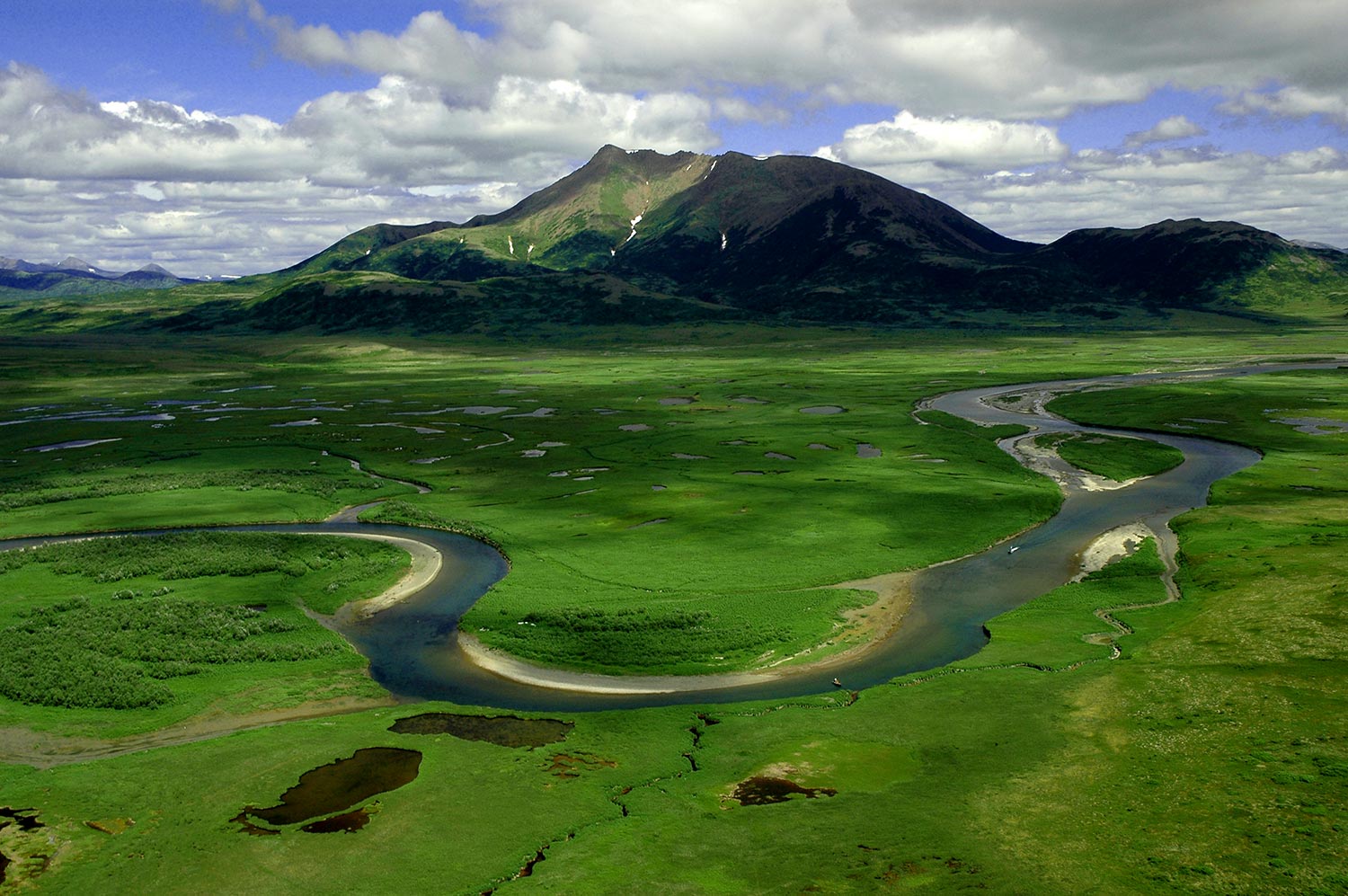At Tikchik, we are so fortunate to have 4.7 million acres of pristine fish and wildlife habitat in our backyard with the Togiak National Wildlife Refuge. This region is a kaleidoscope of landscapes that include mountain crags, fast-flowing rivers, deep lakes, tundra, marshy lowlands, ponds, estuaries, coastal lagoons, and sea cliffs. The refuge is home to dozens of rich salmon rivers and streams that offer incredible fishing for our anglers. Here are some fun and interesting facts about the Togiak Refuge.
- Three major river systems, comprising over 1,500 miles of water, lie within the Togiak Wilderness (Togiak, Kanektok, and Goodnews). More than one million salmon return to these waters each year to spawn.
- The indigenous peoples here are the Yup’ik Eskimos. There is evidence of human habitation in this area for 5000 years. Many people living in this region today live a subsistence lifestyle. Locals rely on wildlife for meat, it is easily possible to provide all the meat a family can eat from the land. One of the main purposes of Togiak National Wildlife Refuge is to continue to provide subsistence opportunities for local people.
- The northern 2.3 million acres of the refuge are designated as a Wilderness Area.The Togiak Wilderness covers about half of the refuge. The wilderness area includes pristine rivers, clear mountain lakes, and steep-sloped mountains. It provides outstanding opportunities for solitude and primitive recreation. The rugged Ahklun and Wood River Mountains, partly within the wilderness area, are noteworthy for their scenic values.
- Some 201 species of birds have been sighted on Togiak Refuge. Threatened species can occasionally be found here, including Steller’s and spectacled eiders. Several arctic goose species frequent the refuge, along with murres, seven species of owls, peregrine falcons, dowitchers, Lapland longspurs and a rich variety of other seabirds, waterfowl, shorebirds, songbirds and raptors.
- The refuge is home to 48 mammal species, 31 of which are terrestrial and 17 marine. More than 150,000 caribou from two herds, the Nushagak Peninsula and the Mulchatna, make use of refuge lands, which they share with wolf packs, moose, brown and black bear, coyote, Canadian lynx, Arctic fox, muskrat, wolverine, red fox, marmot, beaver, marten, two species of otter, and porcupine, among other land mammals. Seals, sea lions, walrus and whales are found at various times of year along the refuge’s 600 miles (970 km) of coastline.

